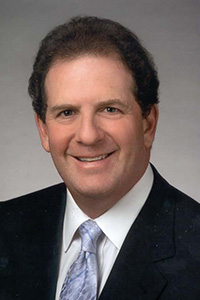Much has been written about the power of positive thinking in the midst of troubling circumstances. Author and motivational speaker Zig Ziglar, who often spoke of avoiding negative thinking in favor of staying optimistic, said, “Getting knocked down is a given; getting up and moving forward is a choice.”
In fact, scientific research has been devoted to proving positivity’s merits. One study published by Behaviour Research and Therapy showed that those facing anxiety disorder who thought positively about a situation they worried about reported being happier, more restful and even had decreased anxiety.1 Facing difficulty with strength, determination and support certainly helps – especially when coming up against something as daunting as a cancer diagnosis.
February is Cancer Prevention Month, giving benefits advisors the perfect reason to meet with clients to discuss the value of making cancer insurance available to their workforces. For one, its financial benefits may have the power to help those with the disease live better, more worry-free lives during treatment and beyond.
Another important topic during Cancer Prevention Month? The value of encouraging employees to do things they can – and not do – to help protect themselves. These include:
- Avoiding tobacco products. According to the M.D. Anderson Cancer Center, 30 percent of cancer diagnoses are related to the use of tobacco. What’s more, smoking is the cause of 90 percent of all lung cancer. And second-hand smoke can be dangerous, as it can raise the risk of heart disease.2
- Protecting their skin by limiting their exposure to UV rays, both from tanning beds and the sun.
- Eating a healthy diet. Guidelines from the American Institute for Cancer Research include eating a plant-based diet, limiting red meat and alcohol, avoiding processed meat and choosing whole grains.3
- Being physically active, which reduces the risk of some cancers and helps maintain a healthy weight.
Why cancer insurance?
When an employee is dealing with cancer, the last thing they need is additional stress. After all, many doctors believe stress impedes recovery, a concern confirmed by a Wake Forest study that shows that once cancer has taken hold, stress biochemically feeds its growth.4
With that in mind, employees should not be worrying about how to pay the bills during treatment and recovery. That’s why cancer insurance is so important and why workers should have the right combination of major medical insurance and cancer coverage in place.
Cancer and specified-disease insurance can go a long way in helping employees focus on recovery rather than on financial concerns. A voluntary insurance policy helps protect a patient’s savings from expenses that may not be covered by major medical insurance, including the cost of deductibles and copays; child care; and normal living expenses, such as the mortgage or rent, and car payments. Figure in benefits for a child diagnosed with cancer, nonsurgical cancer treatment options, and surgery after genetic testing for cancer and you can see how cancer insurance can help provide an extra layer of security and peace of mind.
No one likes to think they or a loved one will one day be dealing with cancer, but the facts are sobering. The National Cancer Institute estimates that the number of people living beyond a cancer diagnosis will reach almost 19 million by 2024 and that 39.6 percent of men and women will learn they have cancer during their lifetimes.5
As a benefits expert, take time during February to brainstorm with your accounts about cancer insurance and its power to help protect employees from the high costs of cancer and related treatment. When concerns about finances are alleviated, employees can better maintain a positive outlook and keep their focus on what is the most important: surviving cancer with hope, optimism and determination.
This article is for informational purposes and is not intended as a solicitation.
1 Behaviour Research and Therapy. Vol. 78 (March 2016). Pages 1-50. Accessed on Jan. 30, 2018. https://ac.els-cdn.com/S0005796715300814/1-s2.0-S0005796715300814-main.pdf?_tid=a1e80fc6-05ce-11e8-bae6-00000aab0f02&acdnat=1517324747_35b44ba7016c916514fe6b569882c07b.
2 M.D. Anderson Cancer Center. “Manage your risk.” Accessed Jan. 10, 2018. https://www.mdanderson.org/prevention-screening/manage-your-risk.html?intcmp=StayInformed2_PreventionScreening_ManageYourRisk.
3 American Institute for Cancer Research. “A model plate for a cancer-protective diet.” Accessed Jan. 10, 2018. http://www.aicr.org/new-american-plate/cancer-preventive-diet-model-plate.html.
4 Forbes.com. “New study shows how stress feeds cancer cells.” Accessed Jan. 10, 2018. https://www.forbes.com/sites/daviddisalvo/2013/01/29/new-study-shows-how-stress-feeds-cancer-cells/#77de0b4a3b30.
5 National Cancer Institute. “Cancer statistics.” Accessed Jan. 10, 2018. https://www.cancer.gov/about-cancer/understanding/statistics.
Bio:
Stephanie Shields is vice president of National Broker Relations at Aflac.








.png?width=300&height=300&name=CC%202025%20Ad%20(300%20x%20300%20px).png)
.png?width=300&height=600&name=Tax%20Talk%20Graphic%20-%20email%20tower%20(300%20x%20600%20px).png)



.png?width=300&name=NAIFA-FSP-LH%20with%20tagline%20-%20AT%20blog%20email%20ad%20(300%20x%20250%20px).png)
.png?width=728&height=89&name=2024%20Congressional%20Conference%20(728%20x%2089%20px).png)
